Point-of-Care Testing Evaluated for Early Coagulopathy Diagnosis
|
By LabMedica International staff writers Posted on 09 Jun 2021 |
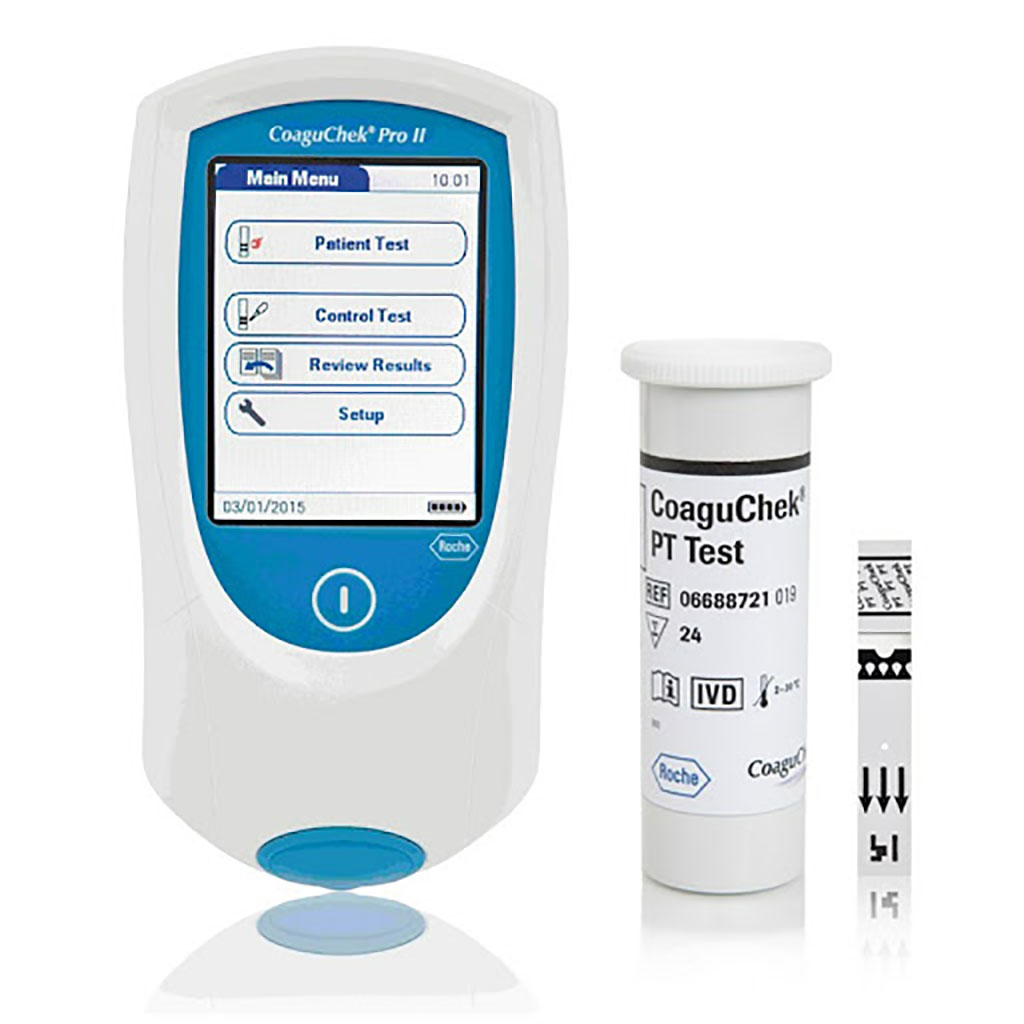
Image: The CoaguChek Pro II Coagulation Meter and CoaguChek PT Test Strips (Photo courtesy of Roche Diagnostics)
Hemorrhage and coagulopathy are particularly relevant complications and are often connected to injuries, surgical interventions, serious diseases, anticoagulant medication or pregnancy/delivery. Acute bleeding requires fast and targeted therapy and therefore, knowledge of the patient's potential to form a clot is crucial.
Treating bleeding complications, rapid hemostatic optimization (interventional, surgical, mechanical or medication) and targeted therapy are therapeutic goals and are therefore equivalent to those of coagulopathy treatment. The earlier a coagulopathy is diagnosed, the earlier a targeted therapy can be initiated. The international normalized ratio (INR) value is of particular importance for the diagnosis and therapy of coagulopathy.
Intensive Care Physicians at the University Hospital Frankfurt (Frankfurt, Germany) and their colleagues included in a study, one group that included hemorrhagic patients from the department of obstetrics (obstetric group = OG), and another group comprising patients admitted to the emergency department (emergency group = EG). The primary outcome measure was the difference between two INR results of one blood sample determined by point-of-care testing (POCT) and standard laboratory testing (SL).
After blood sampling, a drop of blood was applied immediately to the test stripe of the POCT device, CoaguChek Pro II (Roche Diagnostics GmbH, Mannheim, Germany). The CoaguChek Pro II is a portable device requiring an 8-μl sample volume. It measures the international normalized ratio (INR) based on an electrochemical reaction. Samples for SL analysis were sent to the central laboratory via a pneumatic dispatch system (EG) or personal-based transport (OG) for automated analysis with an ACL TOP 700 Hemostasis testing System, (Werfen GmbH, Munich, Germany) in combination with PT Re Combiplastin 2G reagents.
The team reported that INR results between POCT and SLA showed a high and significant correlation. POCT results were reported significantly more quickly (EG: 1.1 versus 39.6 minutes; OG: 2.0 versus 75 minutes) and required less time for analysis (EG: 0.3 versus 24.0 minutes; OG: 0.5 versus 45.0 minutes) compared to SLA. The time for transportation with the pneumatic tube was significantly shorter (8.0 versus 18.5 minutes) than with the personal-based transport system. The estimated blood loss was between 800 mL and 1300 mL.
The authors concluded that strip-based test systems may be suitable methods for the emergency diagnosis of hemorrhagic patients because their measurement results are available significantly more quickly and seem to support the use of point-of-care INR-devices to rule out pathological INR-values in bleeding patients. The test strip-based methods can be used as diagnostic elements in hemotherapy algorithms to implement fast and targeted hemotherapy that can positively impact the clinical outcomes of patients. The study was published on May 23, 2021 in the journal Practical Laboratory Medicine.
Related Links:
University Hospital Frankfurt
Roche Diagnostics
Werfen
Treating bleeding complications, rapid hemostatic optimization (interventional, surgical, mechanical or medication) and targeted therapy are therapeutic goals and are therefore equivalent to those of coagulopathy treatment. The earlier a coagulopathy is diagnosed, the earlier a targeted therapy can be initiated. The international normalized ratio (INR) value is of particular importance for the diagnosis and therapy of coagulopathy.
Intensive Care Physicians at the University Hospital Frankfurt (Frankfurt, Germany) and their colleagues included in a study, one group that included hemorrhagic patients from the department of obstetrics (obstetric group = OG), and another group comprising patients admitted to the emergency department (emergency group = EG). The primary outcome measure was the difference between two INR results of one blood sample determined by point-of-care testing (POCT) and standard laboratory testing (SL).
After blood sampling, a drop of blood was applied immediately to the test stripe of the POCT device, CoaguChek Pro II (Roche Diagnostics GmbH, Mannheim, Germany). The CoaguChek Pro II is a portable device requiring an 8-μl sample volume. It measures the international normalized ratio (INR) based on an electrochemical reaction. Samples for SL analysis were sent to the central laboratory via a pneumatic dispatch system (EG) or personal-based transport (OG) for automated analysis with an ACL TOP 700 Hemostasis testing System, (Werfen GmbH, Munich, Germany) in combination with PT Re Combiplastin 2G reagents.
The team reported that INR results between POCT and SLA showed a high and significant correlation. POCT results were reported significantly more quickly (EG: 1.1 versus 39.6 minutes; OG: 2.0 versus 75 minutes) and required less time for analysis (EG: 0.3 versus 24.0 minutes; OG: 0.5 versus 45.0 minutes) compared to SLA. The time for transportation with the pneumatic tube was significantly shorter (8.0 versus 18.5 minutes) than with the personal-based transport system. The estimated blood loss was between 800 mL and 1300 mL.
The authors concluded that strip-based test systems may be suitable methods for the emergency diagnosis of hemorrhagic patients because their measurement results are available significantly more quickly and seem to support the use of point-of-care INR-devices to rule out pathological INR-values in bleeding patients. The test strip-based methods can be used as diagnostic elements in hemotherapy algorithms to implement fast and targeted hemotherapy that can positively impact the clinical outcomes of patients. The study was published on May 23, 2021 in the journal Practical Laboratory Medicine.
Related Links:
University Hospital Frankfurt
Roche Diagnostics
Werfen
Latest Hematology News
- ADLM’s New Coagulation Testing Guidance to Improve Care for Patients on Blood Thinners
- Viscoelastic Testing Could Improve Treatment of Maternal Hemorrhage
- Pioneering Model Measures Radiation Exposure in Blood for Precise Cancer Treatments
- Platelets Could Improve Early and Minimally Invasive Detection of Cancer
- Portable and Disposable Device Obtains Platelet-Rich Plasma Without Complex Equipment
- Disposable Cartridge-Based Test Delivers Rapid and Accurate CBC Results
- First Point-of-Care Heparin Monitoring Test Provides Results in Under 15 Minutes

- New Scoring System Predicts Risk of Developing Cancer from Common Blood Disorder
- Non-Invasive Prenatal Test for Fetal RhD Status Demonstrates 100% Accuracy
- WBC Count Could Predict Severity of COVID-19 Symptoms
- New Platelet Counting Technology to Help Labs Prevent Diagnosis Errors
- Streamlined Approach to Testing for Heparin-Induced Thrombocytopenia Improves Diagnostic Accuracy
- POC Hemostasis System Could Help Prevent Maternal Deaths
- New Test Assesses Oxygen Delivering Ability of Red Blood Cells by Measuring Their Shape
- Personalized CBC Testing Could Help Diagnose Early-Stage Diseases in Healthy Individuals
- Non-Invasive Test Solution Determines Fetal RhD Status from Maternal Plasma
Channels
Clinical Chemistry
view channel
VOCs Show Promise for Early Multi-Cancer Detection
Early cancer detection is critical to improving survival rates, but most current screening methods focus on individual cancer types and often involve invasive procedures. This makes it difficult to identify... Read more
Portable Raman Spectroscopy Offers Cost-Effective Kidney Disease Diagnosis at POC
Kidney disease is typically diagnosed through blood or urine tests, often when patients present with symptoms such as blood in urine, shortness of breath, or weight loss. While these tests are common,... Read moreMolecular Diagnostics
view channel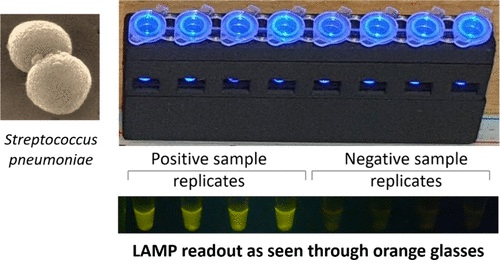
New Diagnostic Method Detects Pneumonia at POC in Low-Resource Settings
Pneumonia continues to be one of the leading causes of death in low- and middle-income countries, where limited access to advanced laboratory infrastructure hampers early and accurate diagnosis.... Read more
Blood Immune Cell Analysis Detects Parkinson’s Before Symptoms Appear
Early diagnosis of Parkinson’s disease remains one of the greatest challenges in neurology. The condition, which affects nearly 12 million people globally, is typically identified only after significant... Read moreImmunology
view channel
Blood-Based Liquid Biopsy Model Analyzes Immunotherapy Effectiveness
Immunotherapy has revolutionized cancer care by harnessing the immune system to fight tumors, yet predicting who will benefit remains a major challenge. Many patients undergo costly and taxing treatment... Read more
Signature Genes Predict T-Cell Expansion in Cancer Immunotherapy
Modern cancer immunotherapies rely on the ability of CD8⁺ T cells to rapidly multiply within tumors, generating the immune force needed to eliminate cancer cells. However, the biological triggers behind... Read moreMicrobiology
view channel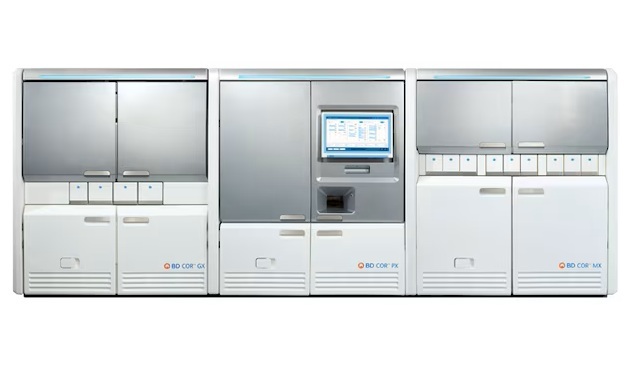
High-Throughput Enteric Panels Detect Multiple GI Bacterial Infections from Single Stool Swab Sample
Gastrointestinal (GI) infections are among the most common causes of illness worldwide, leading to over 1.7 million deaths annually and placing a heavy burden on healthcare systems. Conventional diagnostic... Read more
Fast Noninvasive Bedside Test Uses Sugar Fingerprint to Detect Fungal Infections
Candida bloodstream infections are a growing global health threat, causing an estimated 6 million cases and 3.8 million deaths annually. Hospitals are particularly vulnerable, as weakened patients after... Read morePathology
view channel
New Molecular Analysis Tool to Improve Disease Diagnosis
Accurately distinguishing between similar biomolecules such as proteins is vital for biomedical research and diagnostics, yet existing analytical tools often fail to detect subtle structural or compositional... Read more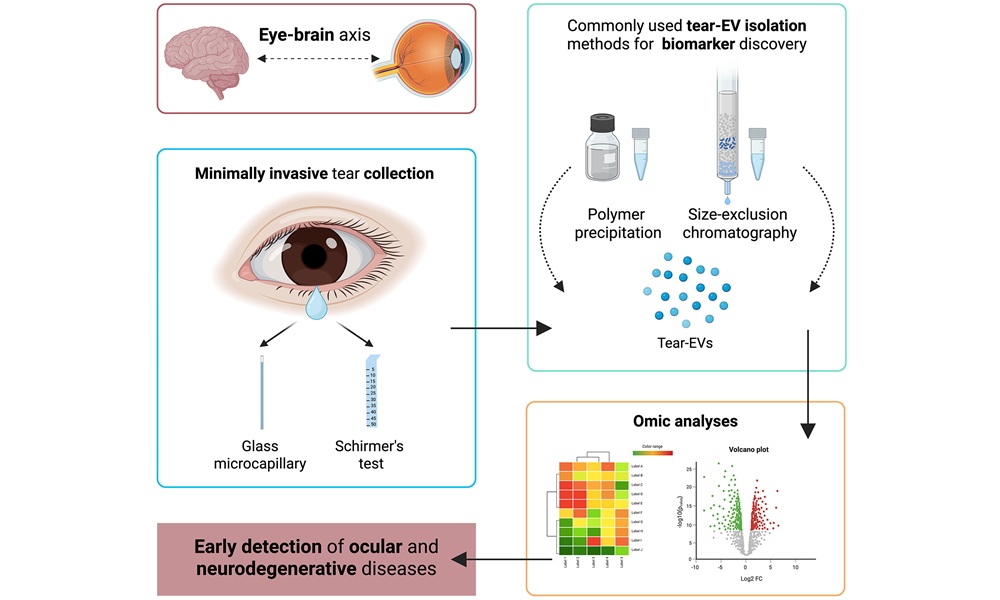
Tears Offer Noninvasive Alternative for Diagnosing Neurodegenerative Diseases
Diagnosing and monitoring eye and neurodegenerative diseases often requires invasive procedures to access ocular fluids. Ocular fluids like aqueous humor and vitreous humor contain valuable molecular information... Read moreTechnology
view channel
Cell-Sorting Device Uses Electromagnetic Levitation to Precisely Direct Cell Movement
Sorting different cell types—such as cancerous versus healthy or live versus dead cells—is a critical task in biology and medicine. However, conventional methods often require labeling, chemical exposure,... Read more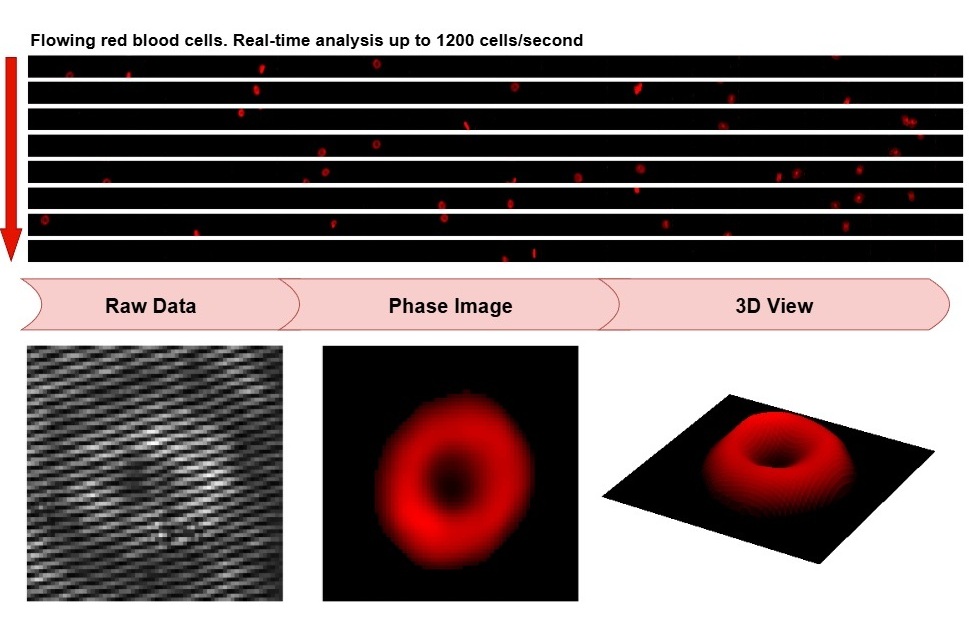
Embedded GPU Platform Enables Rapid Blood Profiling for POC Diagnostics
Blood tests remain a cornerstone of medical diagnostics, but traditional imaging and analysis methods can be slow, costly, and reliant on dyes or contrast agents. Now, scientists have developed a real-time,... Read moreIndustry
view channel
Qiagen Acquires Single-Cell Omics Firm Parse Biosciences
QIAGEN (Venlo, Netherlands) has entered into a definitive agreement to fully acquire Parse Biosciences (Seattle, WA, USA), a provider of scalable, instrument-free solutions for single-cell research.... Read more
Puritan Medical Products Showcasing Innovation at AMP2025 in Boston
Puritan Medical Products (Guilford, ME, USA), the world’s most trusted manufacturer of swabs and specimen collection devices, is set to exhibit at AMP2025 in Boston, Massachusetts, from November 11–15.... Read more
Advanced Instruments Merged Under Nova Biomedical Name
Advanced Instruments (Norwood, MA, USA) and Nova Biomedical (Waltham, MA, USA) are now officially doing business under a single, unified brand. This transformation is expected to deliver greater value... Read more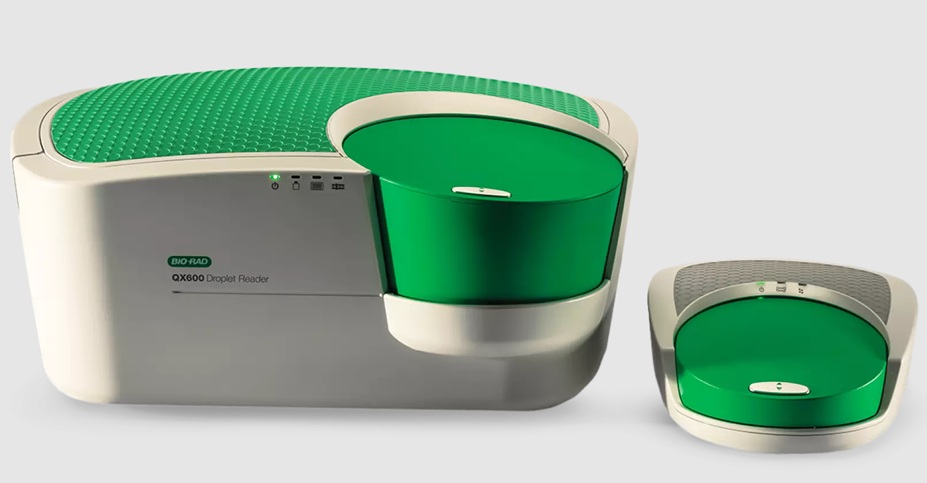




 assay.jpg)


















